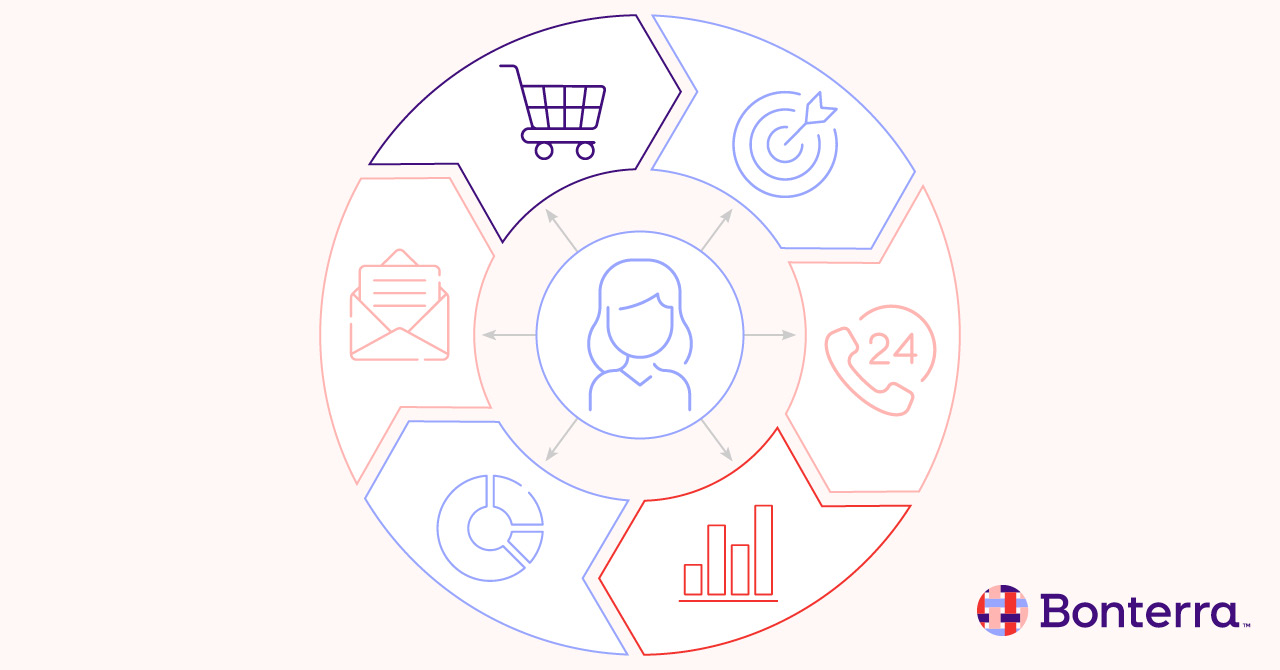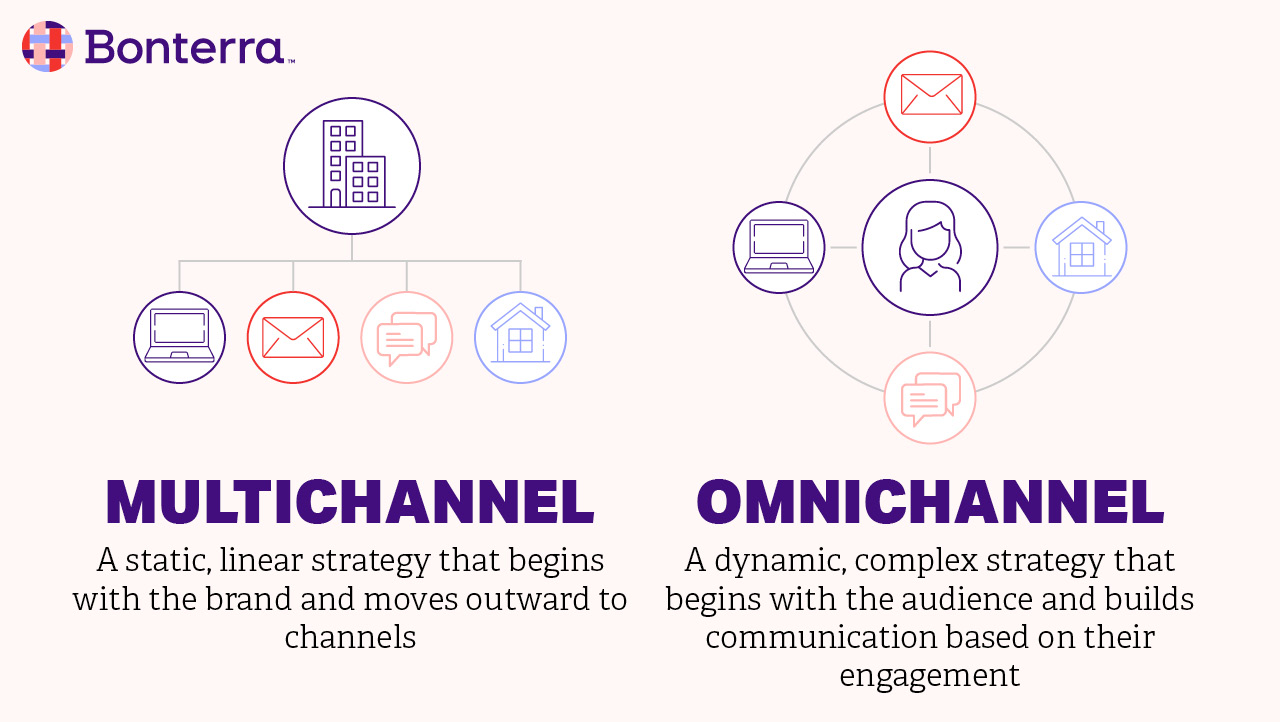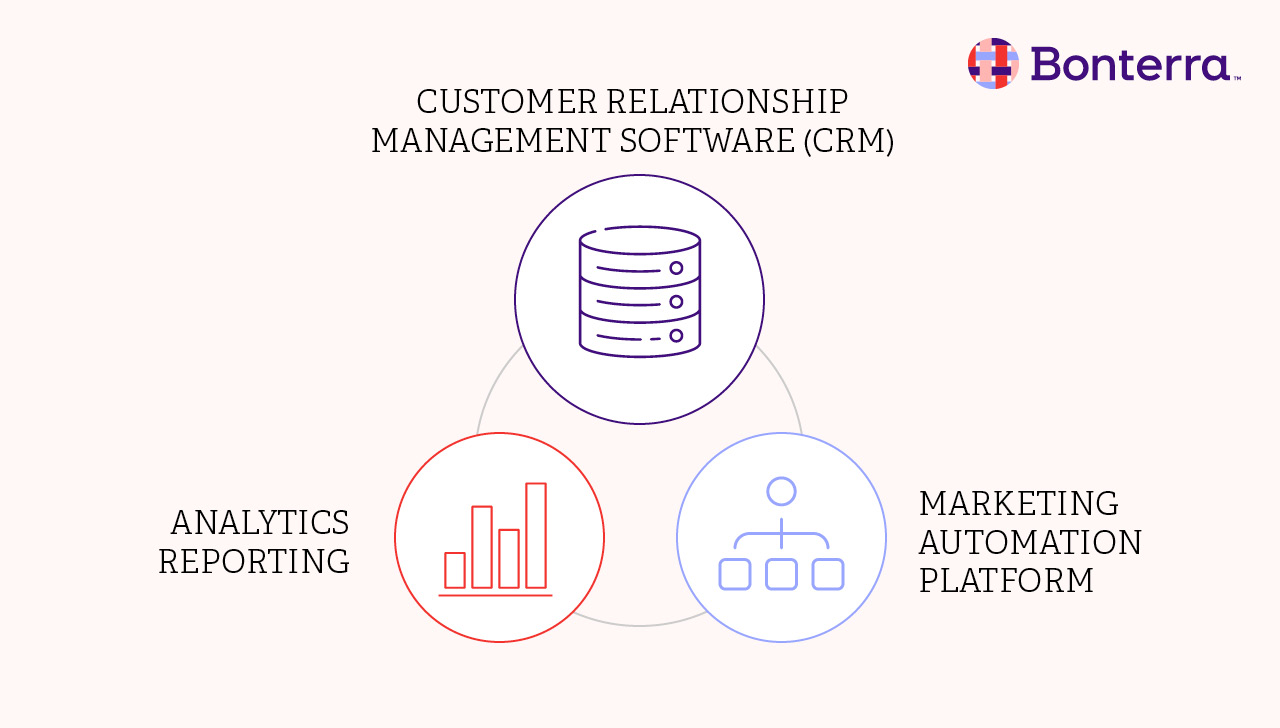Effective fundraisers aim to put their message in front of as many people as possible. To achieve this, rather than choosing just one or two platforms to market on, nonprofits should consider taking an omnichannel fundraising approach and marketing on every possible channel.
Nonprofits new to omnichannel fundraising likely have questions about what this style of marketing will look like for them. To start your research into omnichannel fundraising, this guide will answer a few of the most frequently asked questions about this marketing method.
What is omnichannel fundraising?
Omnichannel marketing is the cohesive integration of all communication channels that an organization uses, both digital and traditional, to provide a seamless, unified experience for your audience. This isn’t a new concept for the for-profit sector, but omnichannel fundraising represents an area of growth and improvement for many nonprofits.

Omnichannel fundraising is a strategy that encourages nonprofits to examine their audience, messaging, timing, and channels holistically. This means that there is intentional, strategic coordination in the message your nonprofit communicates to your audience across the different communication channels they are consuming.
Why is omnichannel fundraising important?
Omnichannel fundraising is the new standard in modern nonprofit communication. As technology develops and new platforms emerge, audiences tend to become spread out across multiple channels. To reach these supporters, nonprofits need to expand their message and be ready to adapt to new platforms.
What does omnichannel fundraising look like for nonprofits?
Despite differences in goals, adopting an omnichannel approach is a similar process for both for- and nonprofit organizations. The major difference is that rather than closing a sale or expanding a customer base, nonprofits can use omnichannel marketing to fundraise and acquire more supporters.
To succeed in the modern digital landscape, your organization’s messaging, branding, and timing should be consistent online and offline—from email, websites, and social media to direct mail, telephone, and print flyers.
Keep in mind that there isn’t a one-size-fits-all omnichannel fundraising strategy. Try testing a few variations of omnichannel communication to discover the best strategies for your unique mission and supporter base.
For example, you might incorporate digital ads into your direct mail campaign, or tie in the same messaging in your letters as you used in your emails and social media posts. In this scenario, the key is to keep messaging consistent, but not identical across each channel. This keeps information fresh in the minds of potential donors, encouraging them to take action when they’re ready.
Is omnichannel fundraising the same as multichannel fundraising?
It isn’t uncommon for people to use the terms multichannel and omnichannel interchangeably. However, multichannel and omnichannel are not the same. The easiest way to understand the difference between the two is to look at how the messaging used relates to the overall strategy.

While both strategies involve communicating with a supporter through multiple channels, the difference lies in the details. Multichannel is a static, linear strategy that begins with the organization and moves outward with its messaging. Omnichannel is a dynamic, multi-dimensional strategy that begins with the supporter and builds communication around their needs and wants, making sure to update the messaging as their engagement with the organization evolves.
In a multichannel approach, communication on each channel remains largely unchanged. This means that if a supporter sees messaging from multiple channels it may be duplicative, rather than building on itself and moving them further along the donor journey. With an omnichannel approach, the messaging meets the audience where they are, which includes not only which channel they’re using, but also considers their particular stage of the donor journey.
With each touchpoint, the messaging is updated based on how the audience engages at each step. For example, after a supporter interacts with a post on social media about an upcoming event, you might send them an email noting their interest, then a personal invitation to the event in the mail. This method provides information that is both relevant and convenient, qualities which help eliminate barriers between a potential supporter and your organization.
What tools are needed for effective omnichannel fundraising?
As marketing strategies and tools evolve, nonprofits need to ensure they can adapt by adopting the technology necessary to run complex, personalized campaigns.
When it comes to omnichannel fundraising, nonprofits need to make sure they have the right tools and know how to use them to achieve their goals. Below are the three foundational tools that will help facilitate a successful omnichannel fundraising campaign.

Unified database/CRM
An effective, unified constituent relationship management (CRM) platform is at the core of a properly functioning omnichannel strategy. Because omnichannel fundraising is a user-centered strategy, it requires organizations to make informed decisions and provide personalized content based on accurate data collection.
With a unified CRM, engagement data from every channel is stored in one location. This way, nonprofit fundraisers can easily segment supporters to begin constructing a personalized, targeted experience for each of them based on shared characteristics and traits.
Workflow automation
Timing is critical for omnichannel fundraising. If someone interested in your organization doesn’t hear back from you or get the information they’re looking for right away, they’ll lose interest quickly.
Marketing automation enables nonprofits to overcome this issue. Building out drip campaigns, that include not only email but can coordinate communication across channels and work based on automatic triggers, makes for quick response times. This can free up staff time and empower your team to focus on tasks that require a human touch.
With effective data collection and the ability to segment it quickly, workflow automation allows you to put your information to good use and ensure that you are sending the right message, to the right supporters, at the right time.
Analytics and reporting
Once you’ve kicked off your campaign, you’ll need to be able to easily track progress and evaluate success. A strong reporting tool helps you keep track of performance, monitor supporter activity, and make any necessary adjustments and improvements to optimize your campaign. This way, your nonprofit isn’t just talking to existing and potential supporters, but also actively listening to them and driving future decisions based on their behavior.
Predictive analytics take things a step further by empowering fundraisers with the ability to predict donor behavior based on their past involvement. This type of analytics reporting gives valuable insight into which donor is likely to respond to certain fundraising asks.
The impact of omnichannel fundraising
Omnichannel fundraising is a dynamic messaging strategy that allows you to approach your donors where they are and push them toward the next step in their donor journey. Get started with omnichannel fundraising by researching your audience and the tools you’ll need to communicate with them.
Ready to Get Started?




